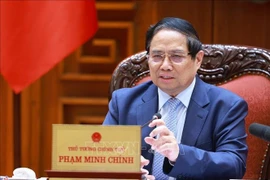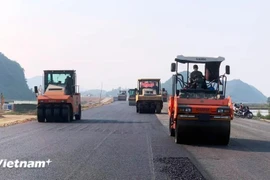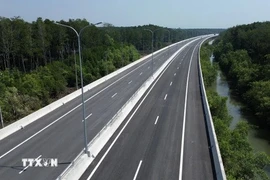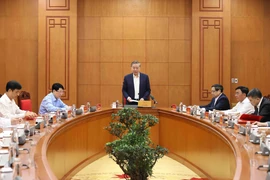Hanoi (VNS/VNA) - Vietnam is expected to begin construction and expansion of seven expressway projects this year.
These are nationally significant projects that, once completed, will enhance the traffic capacity of the North-South road corridor while promoting socio-economic development.
By the end of 2024, approximately 2,000km of expressways were put into operation. However, due mostly to financial difficulties, some expressways still face limitations in terms of lane capacity and speed restrictions.
The Ministry of Construction reported that some road sections in the initial investment phase have only two lanes or four limited-width lanes, while emergency lanes are either not continuous or too narrow for vehicles to stop properly, forcing them to park partially on the main roadway.
A lack of rest stops is another issue, along with long-term use leading to degradation, especially as traffic volume increases over time.
These problems have resulted in limitations in traffic capacity and road safety, with some serious accidents already occurring on expressways nationwide.
To improve traffic infrastructure, the Ministry of Construction has planned to complete 50 existing transport projects and build 19 new ones by the end of this year.
Of these, seven major expressway projects will begin construction in 2025. Projects include the expansion of the North-South Expressway's Cao Bo - Mai Son, Cam Lo - La Son and La Son - Hoa Lien sections, as well as the HCM City - Trung Lưong Expressway.
New construction projects include the Cho Moi - Bac Kan Expressway, the first phase of the My An - Cao Lanh Expressway, and the Dau Giay - Tan Phu Expressway.
Earlier this month, the expansion project for the North-South Expressway section from Cao Bo to Mai Son was officially launched. This 15.2km section will be widened from four to six lanes, with a designed speed of 100-120km/h, connecting Nam Dinh and Ninh Binh provinces.
Once completed, the project will meet the increasing transportation demands of the North Central region.
The expansion of the Cam Lo - La Son section, which spans approximately 98.35km, will also begin this year. The road will be upgraded from two to four lanes, with a total investment of 6.5 trillion VND (254 million USD).
The La Son - Hoa Lien Expressway connecting Hue province with Da Nang will also be expanded from two to four lanes along 65km, at a total cost of 3.01 trillion VND (118 million USD).
When completed, this project will enhance traffic capacity and improve connectivity between major economic hubs in central Vietnam.
Plans to expand the four-lane Ho Chi Minh City - Trung Luong Expressway to up to eight lanes in some parts are also underway. This key route connects HCM City with the Mekong Delta region, and its expansion will help reduce congestion and traffic accidents.
Apart from these expansion projects, new expressways are also being built.
The Cho Moi - Bac Kan Expressway, spanning 29km with four lanes and a designed speed of 80km per hour, has a total investment of 5.75 trillion VND (225 million USD) that will help shorten travel times between northern provinces and boost socio-economic development and national defence.
Phase 1 of the four-lane My An - Cao Lanh Expressway, which has a length of 26.6km, a design speed of 100km per hour and total investment of nearly 6.2 trillion VND (242 million USD), will enhance connectivity along the Ho Chí Minh Highway, relieve pressure on National Highway 1 and link expressways in the Mekong Delta region.
The 9 trillion VND (352 million USD) Dau Giay - Tan Phu Expressway, which is being built under a Public-Private Partnership (PPP) model, will have a total length of about 60.24km, a design speed of 100km per hour and four lanes connecting the southeastern region and stimulating economic growth in the area.
Connectivity and safety
Traffic expert Nguyen Manh Thang believes that the expansion and construction of these expressways will significantly improve infrastructure and enhance road safety for travellers.
Expanding expressways will increase traffic flow capacity, reducing congestion and overloading.
Lower traffic density and smoother roads will lead to safer and more efficient vehicle movement, minimising the risk of accidents caused by road conditions, traffic jams or collisions between vehicles, Thang said.
Meanwhile, more lanes will also improve traffic organisation by clearly separating vehicles based on their speed and type, reducing conflicts between vehicles of different sizes and speeds, he said.
The expansion projects will include additional interchanges and junctions, making it safer for vehicles to enter and exit the expressway.
Safety measures such as guardrails, emergency lanes, barriers, speed bumps, signage, drainage systems and road markings will help prevent accidents caused by loss of control or adverse weather conditions like flooding and slippery roads.
The expressways will also be equipped with Intelligent Transport Systems (ITS) to monitor and provide traffic alerts. More rest stops and service stations will also be built to facilitate travel and allow drivers to take necessary breaks.
Boosting economic growth
Economist Hoang Thi Thị Thu Phuong said that upgrading transport infrastructure has a major impact on economic and social development.
The expansion and construction of new expressways will reduce travel time between regions, enabling faster connections between provinces and cities.
"Reducing travel time allows businesses and residents to access new markets more easily, promoting trade and goods exchange," she said.
Uninterrupted traffic flow on expressways will also lower transportation costs, enhance logistics and production efficiency, and improve trade and commerce.
The connectivity of industrial zones and regions near expressways will facilitate investment attraction and boost tourism and service industries, ultimately improving overall economic productivity.
In short, expanding and constructing new expressways will not only resolve existing infrastructure shortcomings but also enhance road safety through better design, traffic management, protection systems and monitoring technology, according to Phuong.
Additionally, these projects will drive socio-economic development by improving transportation efficiency and regional connectivity.
These efforts align with Vietnam’s goal of reaching 3,000km of expressways by the end of 2025 and 5,000km by 2030, demonstrating a strong commitment from central and local governments to accelerate infrastructure development and remove existing challenges./.
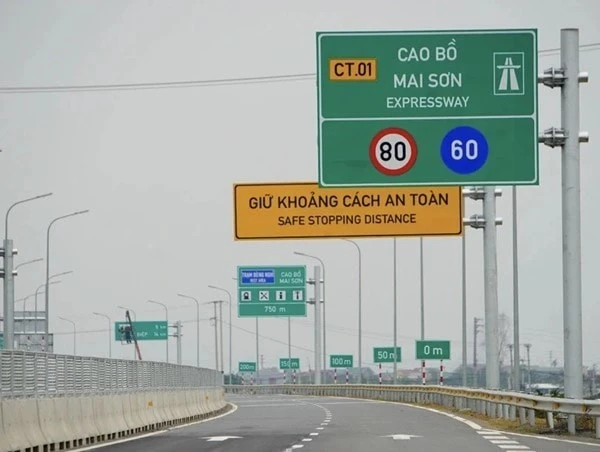
See more

MoF seeks feedback on VAT cut plan to boost economy
The proposal suggests extending the 2% VAT reduction from July 1, 2025, until the end of 2026 for goods and services currently taxed at 10%, lowering them to 8%.
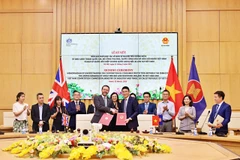
Vietnam, UK sign MoU on consumer protection
At the signing ceremony, Deputy Minister Phan Thi Thang affirmed that the MoU not only represents a milestone in the cooperation between the two sides but also demonstrates the ministry’s commitment to protecting consumer interests in an increasingly interconnected global marketplace.
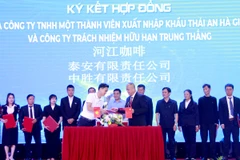
Breakthrough solutions needed to boost Ha Giang – China’s Wenshan: insiders
Despite robust development in their trade ties, Vietnam's Ha Giang province and Wenshan in China’s Yunnan province have not capitalised on their immense potential, making trade revenue lagging behind expectations.
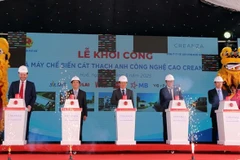
Work begins on two construction material plants in Hue
In his speech at the groundbreaking ceremony, Chairman of the People's Committee of Hue City Nguyen Van Phuong said these two key projects are expected to drive significant progress in the city's manufacturing industry, contributing to the goal of achieving double-digit economic growth in line with the Government's target.
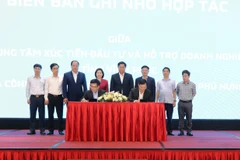
Vinh Phuc holds dialogue to address business challenges
A leader of Vinh Phuc pledged to step up reforming administrative procedures, accelerate land clearance, and enhance digital services to guanrantee a favourable and transparent investment and business climate for enterprises to operate and grow.
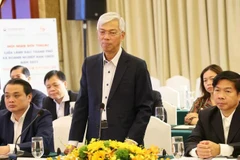
HCM City vows best conditions for Korean investors
By January 2025, the RoK had emerged as HCM City's third-largest foreign investor, boasting 2,286 projects with a total of 5.5 billion USD in registered capital.
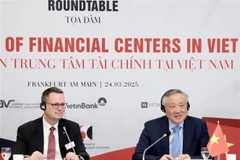
Deputy PM Nguyen Hoa Binh discusses financial centre development with ECB
With the country’s National Assembly expected to issue a resolution this year on the establishment of international financial centres, Binh said the Vietnamese Government hopes to obtain the ECB’s advice in shaping policies for financial regulation, investment attraction, risk management, and anti-money laundering efforts.

Reference exchange rate sustains upward trend on March 25
The daily reference exchange rate continued the upward trend seen on previous days to stand at 24,847 VND/USD on March 25.
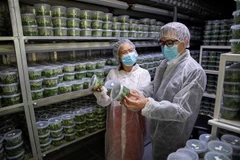
Israel’s agritech expected to help Vietnam increase agricultural productivity, quality
Ambassador Ly Duc Trung has expressed his hope that Israeli businesses will not only see Vietnam as a market for selling technological products and services to but also recognise its potential for cooperation for mutual development.
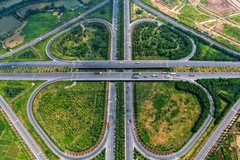
Vietnamese contractors aim for global stage with mega projects
Nguyen Thanh Nghi, then Minister of Construction, said over the past four decades, more than 120 large-scale projects of national significance have been completed. Many of them feature innovative structural designs, new construction techniques, and cutting-edge technologies, some introduced in Vietnam for the first time or holding regional importance.
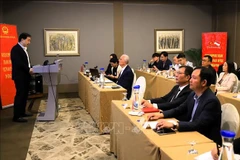
Vietnam, Singapore seek cooperation chances in semiconductor industry
Cross-border collaboration will be key to unlocking the next growth opportunities as Vietnam is an emerging player in the industry, with a market size exceeding 18 billion USD in 2024 and projected to rise to over 31 billion USD by 2029, said a representative from the Singapore Semiconductor Industry Association.
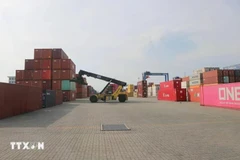
Vietnam has 17 inland container ports
Vietnam now has 17 inland container depots (IDCs) across 12 provinces and centrally-governed cities. IDCs form a crucial part of the country’s transportation infrastructure network. They serve as key logistics hubs, supporting the operations of seaports, airports, inland waterway ports, railway stations, and border checkpoints, while also functioning as customs clearance sites for imports and exports.
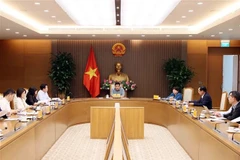
Deputy PM requesting targeted, bold, authorised private sector development solutions
The economic sector contributes approximately 51% of Vietnam’s GDP, over 30% of state budget revenue, more than 30% of total import-export turnover, nearly 60% of total social investment capital, and 82% of the workforce.
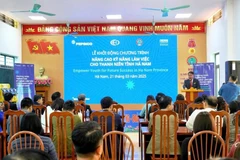
Empower youth for future success in Ha Nam province
The "Empower Youth for Future Success in Ha Nam Province" program is designed to equip these young people with a comprehensive set of skills, including social, financial, employability, and entrepreneurship skills.
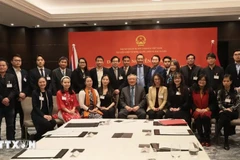
OV intellectuals in UK suggest blueprint for Vietnam’s int’l financial hub ambition
With Ho Chi Minh City ranking 98th out of 121 global financial centres and classified as a "local specialist" in the Global Financial Centres Index (GFCI) released on March 20, Vietnam has a plethora of strategic options to develop its financial hub.
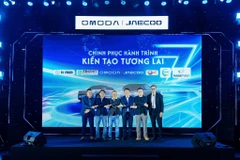
Omoda & Jaecoo Vietnam looks to expand EV charging network
The partnership brings together industry leaders: EBOOST (EVMobility) specialising in personal charging solutions, EV Power in charging station development, EV Pay in digital payment services, Rabbit EVC in integrated charging solutions, and Nova Energy in large-scale renewable energy projects.

📝 OP-ED: Private economic sector with aspiration for groundbreaking development
This message from Party General Secretary To Lam in his recent article "Developing private economic sector – A lever for a prosperous Vietnam" marks a turning point in the awareness about the private economic sector’s important role while touching on the aspiration for groundbreaking development of the country's most dynamic economic industry today.
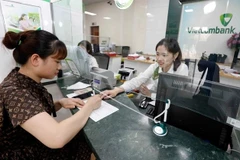
Banks ramps up share payouts to meet Basel III
This strategic move aims to reinforce financial capacity, while complying with international safety standards, said economists and industry experts.

Reference exchange rate up 18 VND at week’s beginning
The State Bank of Vietnam set the daily reference exchange rate for the US dollar at 24,831 VND/USD on March 24, up 18 VND from the last work day of the previous week.

Ministry proposes tripartite coordination mechanism to manage cryptocurrency exchanges
The Ministry of Finance has proposed a pilot programme for issuing and trading cryptocurrencies and digital assets, with oversight from three key agencies: the Ministry of Finance, the Ministry of Public Security, and the State Bank of Vietnam.
